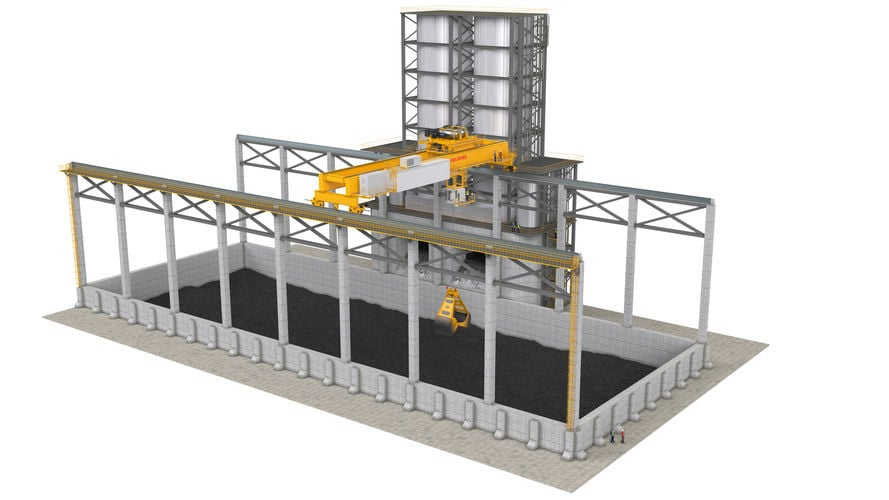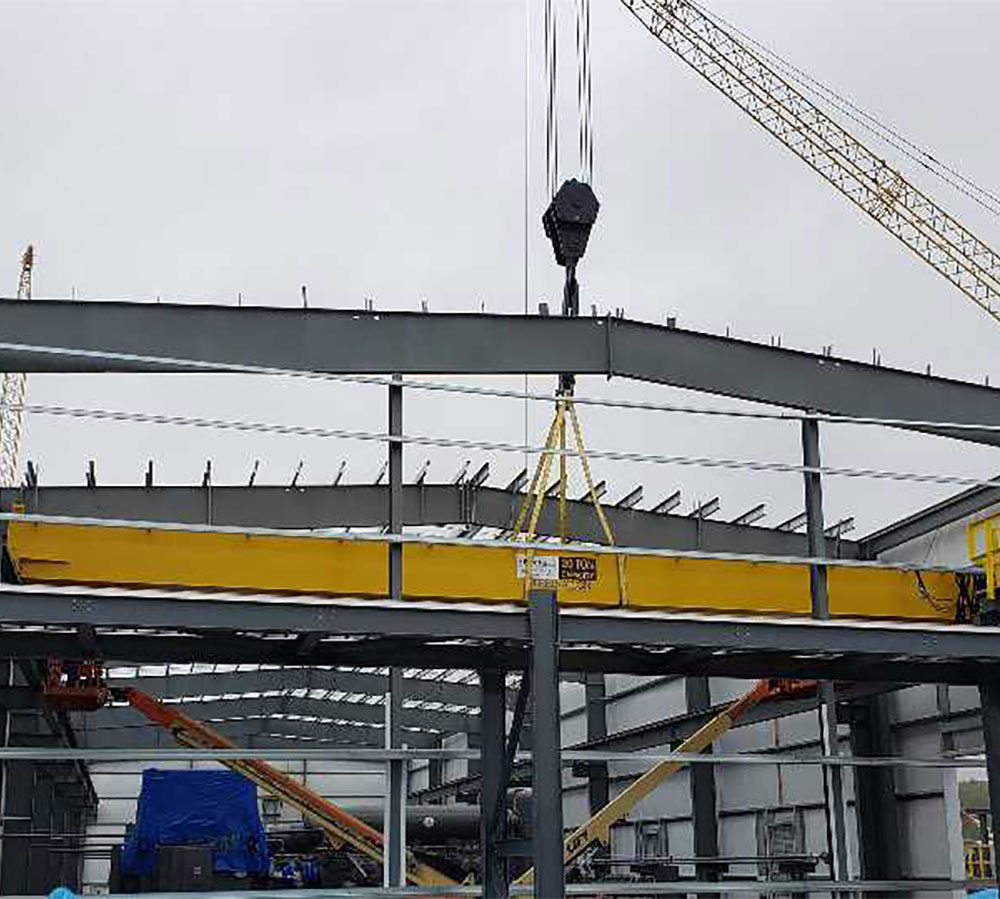Petroleum and Gas
The petrochemical industry, as an important component of modern industry, plays an important role in which cranes play. The application range of cranes is extensive, from refinery construction to oil storage tank maintenance, and even pipeline installation, all of which rely on the help of cranes.
Petrochemical plants typically operate in harsh environments, filled with moisture, corrosive smoke, and abrasive dust. Work is fast and continuous, and downtime can seriously affect production. Dongqi Crane can provide lifting equipment and services that can safely and efficiently address these challenges.
Crane Equipment’s for Petroleum and Gas Industry
Overhead/Gantry crane: Overhead/Gantry cranes are widely used in petrochemical plants, mainly used for lifting materials and installation and maintenance of equipment. Overhead/Gantry cranes can be used to lift materials from one place to another, such as from a warehouse to a production line or from a production line to another warehouse. Overhead/Gantry cranes can be used to install large equipment or components in place. For example, a reactor or distillation column can be lifted from a transport vehicle to a designated location within the plant. Overhead/Gantry cranes can be used to remove equipment or components from their supporting structures for repair or replacement. For example, the stirrer on the reactor can be removed for maintenance.
Overhead Crane With Grab: Grab overhead cranes are also widely used in petrochemical plants. The main function of this kind of crane is to grab and carry bulk materials, such as limestone, mineral powder, coke slag, coke, coal, sand, ore, etc. In petrochemical plants, grab overhead cranes are often used for material handling, from a warehouse to a production line or from a production line to another warehouse. The crane can efficiently handle large quantities of bulk materials and provide necessary support for the production process.
Hoist/Winch: A hoist is a simple machine that uses pulleys and chains or wire ropes to lift or pull heavy objects. In petrochemical plants, hoists are often used for tasks such as equipment installation, maintenance and material handling. For example, when installing large equipment, a hoist can use a combination of pulleys and chains or wire ropes to lift the equipment to the appropriate location. When servicing equipment, hoists can help remove equipment or components from high places for repair or replacement. Additionally, hoists can be used to move materials between warehouses and production lines.
A winch is a machine that uses wire ropes or chains to lift or pull heavy objects. In petrochemical plants, winches are usually used for lifting materials and installation and maintenance of equipment. For example, when lifting materials, a winch can lift heavy objects through wire ropes or chains to reach the appropriate location. When installing and servicing equipment, winches can help remove equipment or components from high places for repair or replacement. In addition, winches can also be used to lift people and materials in emergencies.
It should be noted that when using hoists and winches in petrochemical plants, relevant safety regulations and operating procedures also need to be followed to ensure the safety of personnel and equipment. At the same time, because the environment of petrochemical plants may be harsh, such as high temperatures, corrosive substances, etc., hoists and winches also need to have corresponding protective measures and adaptable designs. Our comprehensive range of explosion-proof cranes and components is derived from our long experience in explosion-proof applications. It includes industrial cranes and jib cranes, as well as electric and manual hoists, with lifting capacities from 250 kg to 500 tonnes.
Expertise for Petroleum and Gas Industry

Refinery construction is an important part of the petrochemical industry, and cranes play a key role in it. During the construction of a refinery, a large amount of heavy equipment and materials are required for lifting and installation, and cranes play a huge role at this time.
1.1 Hoisting and installation of raw material equipment
In the early stages of refinery construction, large raw material equipment needs to be hoisted and installed. These raw material equipment are bulky and heavy, requiring the use of large cranes for operations. The crane can lift the raw material equipment from the transport vehicle to the designated location through wire ropes, chains and other slings, and perform accurate positioning and installation to ensure the overall stability and safety of the equipment.
1.2 Building structure erection
The construction of a refinery also requires the erection of various building structures, such as installing steel frames and building working platforms. These tasks require the use of cranes for high-altitude operations. Cranes can efficiently and safely deliver personnel and materials to high-altitude working areas, improving construction efficiency and quality.
[Oil storage tank maintenance]
Oil storage tanks are important equipment for storing crude oil and refined oil in the petrochemical industry. Regular maintenance and repair of oil storage tanks is a key link to ensure production safety and improve efficiency. Cranes play an important role in oil storage tank maintenance.
2.1 Oil storage tank cleaning
After being used for a period of time, oil storage tanks will accumulate product oil residue and sediment, and need to be cleaned and cleaned. The crane can send cleaning equipment and workers into the oil storage tank to clean and clean the inner wall. At the same time, the crane can also provide transportation equipment to transport materials such as cleaning fluid and garbage out of the tank to keep the inside of the oil storage tank clean.
2.2 Tank roof equipment maintenance
The top equipment of oil storage tanks includes fire prevention devices, floating plates, exhaust devices, etc. These equipment require regular inspection and maintenance. The crane can send maintenance personnel and tools to the top of the tank to perform maintenance and replacement of equipment to ensure the normal operation of the oil storage tank.
【Pipe installing】
Pipeline installation in the petrochemical industry is a complex project that requires a lot of lifting and positioning operations. Cranes play a vital role in the pipeline installation process.
3.1 Pipe fitting lifting
During the pipeline installation process, the pipe fittings need to be delivered from the ground to the designated location. The crane can efficiently and safely deliver the pipe fittings to the designated location through the spreader. Using a crane for pipe lifting can greatly reduce manpower input and improve construction speed and safety.
3.2 Construction site support
During the pipeline installation process, the crane can also provide support operations on the construction site. The crane can efficiently deliver brackets and auxiliary equipment to designated locations to provide necessary support conditions for pipeline installation. The crane can also be used with various lifting tools to achieve the positioning and installation of complex pipelines.
To sum up, cranes are widely used in the petrochemical industry, especially in refinery construction, oil storage tank maintenance, and pipeline installation. The use of cranes not only improves work efficiency, but also ensures construction safety and quality. With the development of the petrochemical industry, the application of cranes will become more and more widespread, playing a positive role in promoting the development of the industry.
Customer Reference Stories

A 20 ton capacity top-running double-girder overhead crane to service a residue building at a local natural gas mid-stream processing facility in West Virginia.
The 20 ton overhead crane, which has a span of 58ft, was designed and manufactured to Class 1 Group C&D Division 2 specifications for hazardous locations, and includes the required spark-resistant mechanical features.
